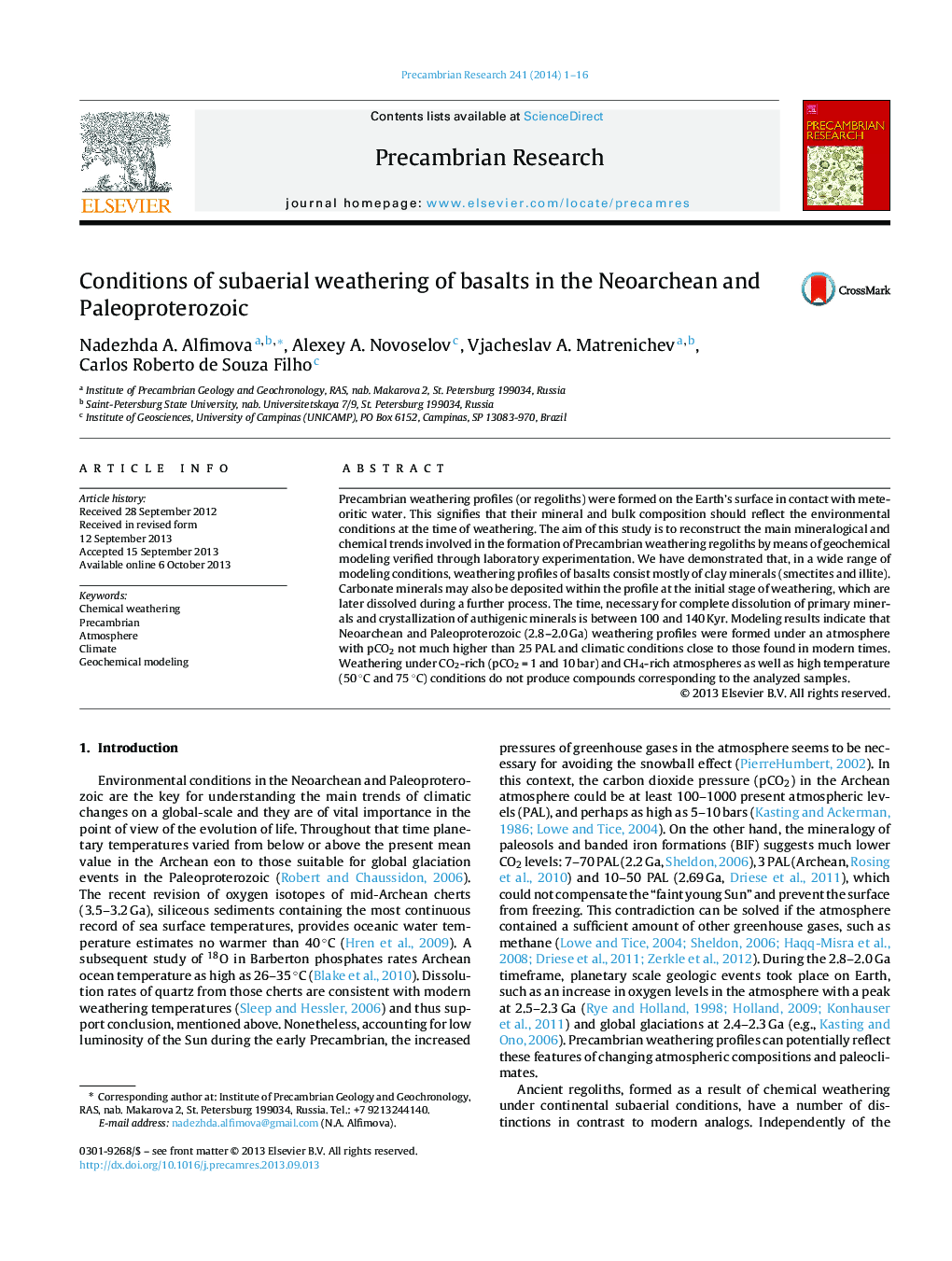| کد مقاله | کد نشریه | سال انتشار | مقاله انگلیسی | نسخه تمام متن |
|---|---|---|---|---|
| 4723059 | 1639633 | 2014 | 16 صفحه PDF | دانلود رایگان |
• Early Precambrian weathering profiles of basalts consisted mostly of clay minerals.
• Carbonate phases, formed at the beginning of weathering, were dissolved afterwards.
• Complete dissolution of primary basaltic minerals requires 100–140 Kyr.
• pCO2 at Early Precambrian was not much higher than 25 PAL.
• Early Precambrian paleosols were likely formed under rainfall rates 400–1000 mm yr−1.
Precambrian weathering profiles (or regoliths) were formed on the Earth's surface in contact with meteoritic water. This signifies that their mineral and bulk composition should reflect the environmental conditions at the time of weathering. The aim of this study is to reconstruct the main mineralogical and chemical trends involved in the formation of Precambrian weathering regoliths by means of geochemical modeling verified through laboratory experimentation. We have demonstrated that, in a wide range of modeling conditions, weathering profiles of basalts consist mostly of clay minerals (smectites and illite). Carbonate minerals may also be deposited within the profile at the initial stage of weathering, which are later dissolved during a further process. The time, necessary for complete dissolution of primary minerals and crystallization of authigenic minerals is between 100 and 140 Kyr. Modeling results indicate that Neoarchean and Paleoproterozoic (2.8–2.0 Ga) weathering profiles were formed under an atmosphere with pCO2 not much higher than 25 PAL and climatic conditions close to those found in modern times. Weathering under CO2-rich (pCO2 = 1 and 10 bar) and CH4-rich atmospheres as well as high temperature (50 °C and 75 °C) conditions do not produce compounds corresponding to the analyzed samples.
Journal: Precambrian Research - Volume 241, February 2014, Pages 1–16
